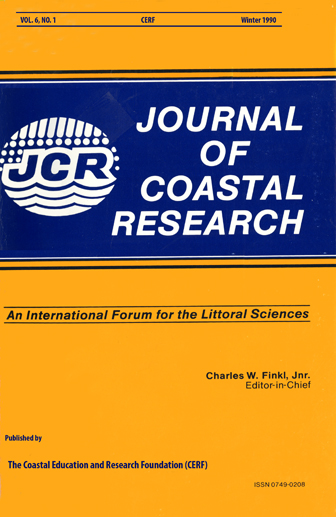Dissipative Beaches and Macrofauna Communities on Exposed Intertidal Sands
Keywords:
Sand, benthos, waves, fauna, zonation, biomass, amphipods, Topic sentences, faunal zonation on flat beaches, global patterns in beach fauna diversity, abundance and biomass, ecology of Oregon sandy beachesAbstract
This study was undertaken primarily to test the hypotheses that (I) the intertidal fauna of exposed sandy beaches occupy four distinct zones and (2) that dissipative (flat) beaches support faunas of high abundance and diversity. The benthic macrofauna of three high energy, dissipative beaches on the Oregon coast was quantitatively surveyed and found to comprise an assemblage of 16-21 species and 50-290*109
individuals per meter per beach. This fauna exhibited zonation four zones being distinguished by 3-4 characteristic species each. Zonation appeared to be related to both interstitial moisture levels in the sand at low tide and tide levels or inundation times. These data together with similar data from a range of beaches in southern Africa and western Australia were analyzed for changes in faunal diversity, total abundance and biomass and mean individual mass in response to physical changes in sand particle size, wave height, beach slope and beach type. The biological parameters showed good correlations with all the physical parameters, but beach slope and type gave the best fits for abundance and diversity. Biomass was however best correlated with wave energy. This is interpreted as meaning (l) that wave energy which may control surf zone productivity and food availability, controls intertidal biomass and (2) that although sand particle size and wave climate may have some direct effects the type of fauna developing on a beach is primarily determined by the total swash "climate" of the beach face as reflected in beach slope and beach type.


